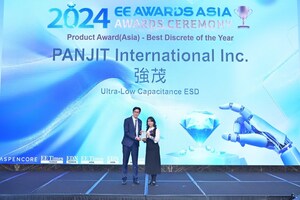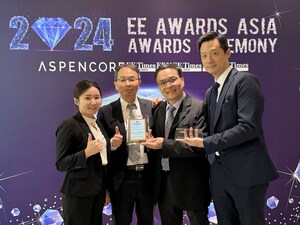Solomon Systech Driving the Next-Generation Display Technologies
TAIPEI, Dec. 18, 2023 /PRNewswire/ -- Featuring longer lifetimes, better durability, and higher efficiency and brightness, micro-LEDs are seen to be the next generation in display technology. According to market analyst Allied Market Research, the global micro-LED display market is projected to reach $23.4 billion by 2030, up from just $56 million in 2020—reflecting a compound annual growth rate (CAGR) of 77.1% from 2021 to 2030.
"Micro-LEDs enable high brightness and resolution and can be used to produce flexible panels," says Raymond Wang, Chief Executive Officer of Solomon Systech, a fabless company specializing in the design and development of IC products and system solutions that enable a wide range of display and touch applications for smartphones and other smart devices including wearables, Electronic Shelf Labels, healthcare devices, smart home devices, industrial appliances, as well as tablets, TV and monitors, and notebooks PCs.
"In addition, the fact that micro-LED displays are more energy-efficient than LED displays make them ideal for use in wearable devices, such as smartwatches. They are also more durable than AMOLED when used in flexible panels," Wang says.
He believes that micro-LEDs will see applications in automotives, AR/VR, and high-end wearables. "Since micro-LED is applicable on flexible panels, it can be used on curved surfaces inside the car," explains Wang. "In addition, micro-LED has the advantage of being more durable, making it an excellent choice for display in automotives. We are working on both AM and PM micro-LED products, depending on our clients' system specifications."
Earlier this year, Solomon Systech released the world's first PM micro-LED display driver targeted at the next generation of high-brightness display for wearables, home appliances, and industrial applications.
Compatible with a high-resolution PM micro-LED panel up to 256RGBx256, Solomon Systech's SSD2363 supports 768 segments and 256 common outputs, enabling more flexibility in tailor-making 16.7M color display for panel sizes up to three inches. On top of that, the SSD2363 supports 320µA segment maximum source current and 120mA common maximum sink current, demonstrating a remarkable advancement in high-brightness PM micro-LED display technology. The product supports 24-bit parallel, SPI and MIPI interface which enables high-speed data transmission to facilitate the display of complicated contents.
These features, and more, are what landed Solomon Systech's SSD2363 a Best MCU/Driver IC award at this year's EE Awards Asia. Now on its third year, EE Awards Asia, organized by AspenCore, celebrates the innovation, creativity, and contributions of Asia's engineering community that have made a difference in the way we work, live, and communicate over the past year.
"Our winning PM micro-LED driver uses high-speed MIPI interface and can support independent RGB gamma adjustment, which allows more vivid colors," says Wang. "It also demonstrates an even display brightness. Micro-LED enables flexible, foldable, rollable, and transparent displays, which allow more possible display applications in the future. The advantage of being flexible would be even more prominent in PM type micro-LED displays because of its lower tooling cost of panel. Currently, there are no other PM micro-LED displays for small panels in the market, yet."
According to Wang, raising awareness for this product in the market could elicit more research in the applications of micro-LEDs, thus helping the development of both AM and PM micro-LEDs for use in both small and large displays.
"With the IC in hand, the industry can then concretely work out ways to further improve their product, decrease product costs, and make them more energy efficient," says Wang.
*EE Awards Asia, organized by AspenCore, publisher of EE Times Taiwan/Asia/India and EDN Taiwan/Asia
SOURCE EE Times Taiwan

WANT YOUR COMPANY'S NEWS FEATURED ON PRNEWSWIRE.COM?
Newsrooms &
Influencers
Digital Media
Outlets
Journalists
Opted In






Share this article